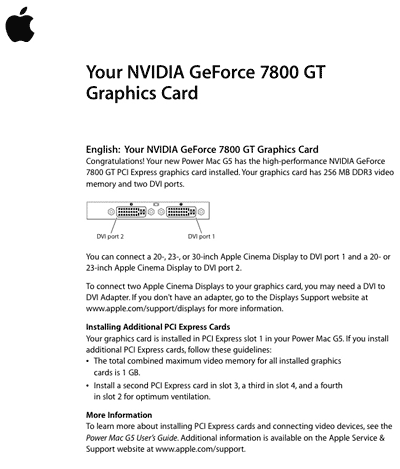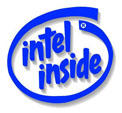I've been talking about the
Quad Power Mac and new PowerBooks for just about forever now, but it has finally happened and fortunately I won't need to
eat my hat. ;) Some pertinent details:
Quad 2.5GHz ($3299)Dual dual-core 2.5 GHz 970MP with 1 MB L2 cache per processor
1.25 GHz bus for each processor
512 MB DDR2-533, with support up to 16 GB, ECC memory optional
PCIe nVidia GeForce 6600 256 MB
Support for professional 3D workstation graphics cards (Quadro option)
Three free PCIe slots
250 GB hard drive
2 hard drive bays only (albeit with up to 1 TB storage)
16X SuperDrive
Dual Gigabit Ethernet
Dual 2.3GHz ($2499)Single dual-core 2.3 GHz
1.15 GHz bus
Dual 2.0GHz ($1999)Single dual-core 2.0 GHz
1.0 GHz bus
160 GB hard drive
PCIe nVidia GeForce 6600 LE 128 MB
It looks like Apple finally has a "real" pro machine, with PCIe workstation graphic cards available and ECC support. Three hard drive bays would have been nice however. The
2.5 GHz speed was as expected.
12" PowerBook ($1499)Slot-load 8X SuperDrive is now standard
80 GB hard drive (up from 60 GB)
Otherwise no significant change in specs from before.
15" PowerBook1440x960 screen
Mobility Radeon 9700 128 MB (up from 64 MB)
DDR2-533
7200 rpm 100 GB upgrade option
17" 1680x10501680x1050 screen
DDR2-533
120 GB hard drive
7200 rpm 100 GB up/downgrade option
The clock speeds of the PowerBooks are the same at 1.5, 1.67, and 1.67 respectively. No specifics are listed but it looks like Freescale wasn't able to get the 90 nm
G4 7448 out in time.
Many will welcome the higher resolution screens in the 15" and 17" PowerBooks, but I wonder how some people will react to the higher pixel density, which will make stuff on screen appear smaller. My guess is that they will be OK with it too, since Apple isn't using the insanely high pixel density screens that some PC laptops use.
The 12" PowerBook is looking pretty long in the tooth though. Basically, it is the 12" iBook with a SuperDrive and a couple of other things, but a worse GPU. It's interesting to see that it didn't even get DDR2 support, or even the 7200 rpm hard drive upgrade option. (The DDR2 support is probably irrelevant however. It's running at 333 MHz anyway.)
One wonders if a 13" widescreen PowerBook is coming early next year.


